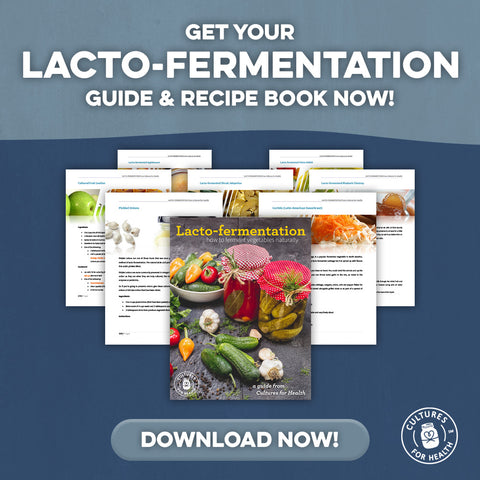
Lacto-fermentation is a simple process with few ingredients. The way produce is prepared has a big impact on the final results.
It is helpful to consider how the finished product will be consumed when deciding on a preparation method. For example, will the vegetables be served as part of an appetizer tray? Or will they be used as a condiment or slice on a sandwich? Planning ahead makes it more likely the vegetables will be enjoyed.
Since the size and shape of the vegetables impacts the speed of fermentation, keep the size of vegetables in one batch consistent, for even fermentation.
DIFFERENT WAYS TO PREPARE VEGETABLES
Grating
Grating a vegetable for fermentation can be done either in a food processor or by hand. This method works well most often for hard or crunchy vegetables. Grating creates the most surface area, allowing salt to penetrate the vegetable more quickly, while drawing out the moisture. It is usually unnecessary to add brine to grated vegetables. They often have the texture of a relish when finished, such as in this Simple Grated Zucchini Kraut
Slicing
Firm vegetables can be sliced very thinly while softer vegetables should be sliced into thicker pieces to preserve their shape during fermentation. Sliced vegetables are generally right in the middle in terms of a culturing time. Lacto-fermented Sliced Jalapeños make a great topper for burgers and hot dogs.
Chopping
Many recipes will specify what size to chop your vegetables. If not, chop to suit your family's taste buds. Chopped vegetables almost always require a salt brine. Depending on their size, these vegetables usually take longer to culture than grated or thinly sliced vegetables. Lacto-fermented Cauliflower and Carrot Pieces make a fun crunchy snack!
Whole Vegetables
Some vegetables work best if left whole. Small vegetables such as radishes, green beans, and brussel sprouts are easy to culture whole and are fun to eat. Pickling cucumbers are traditionally left whole, like in this Kosher Dill Pickle recipe. Some recipes call for submerging a whole head of cabbage in brine. Larger vegetables may require special treatment to culture whole which should be described by the recipe.
















